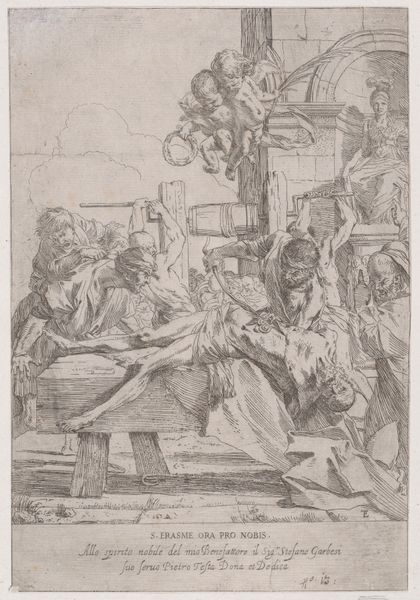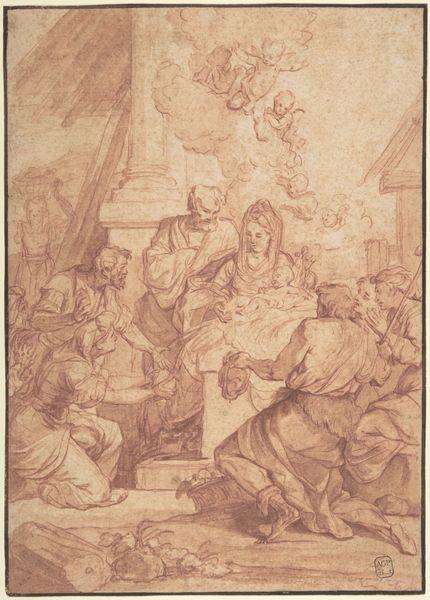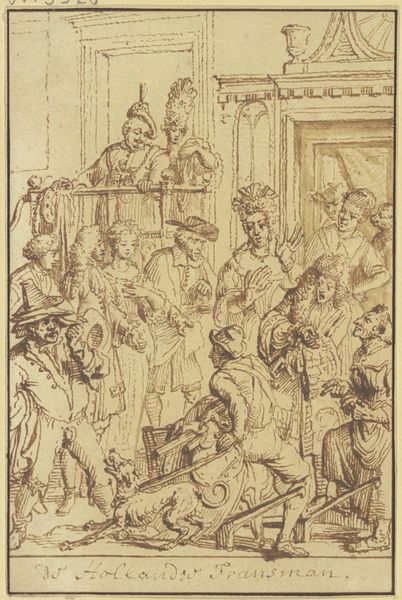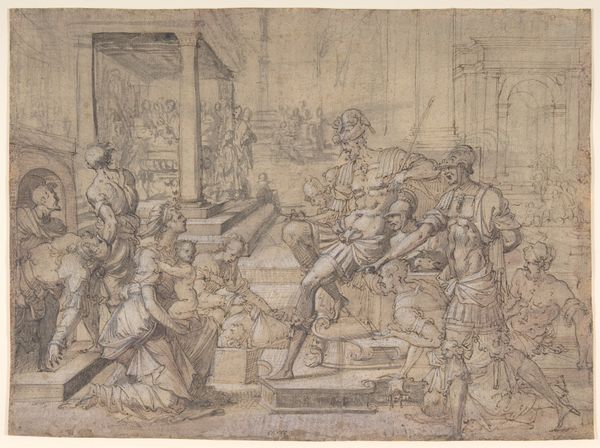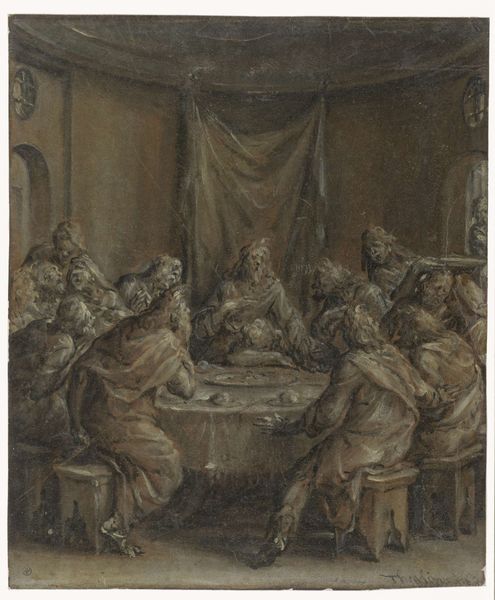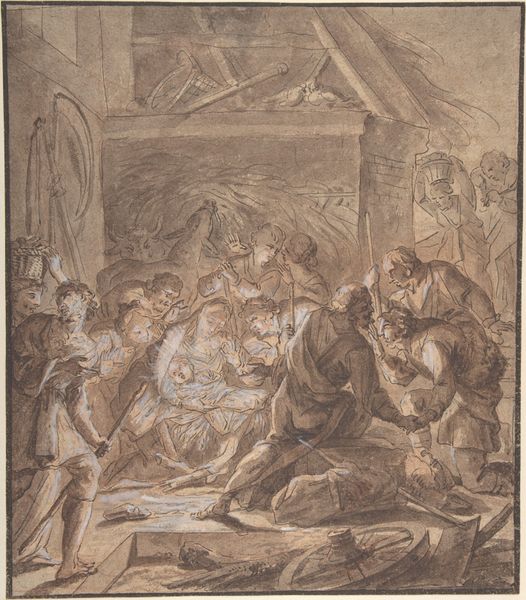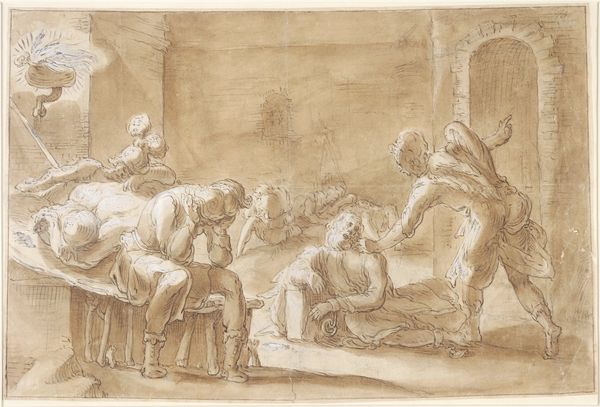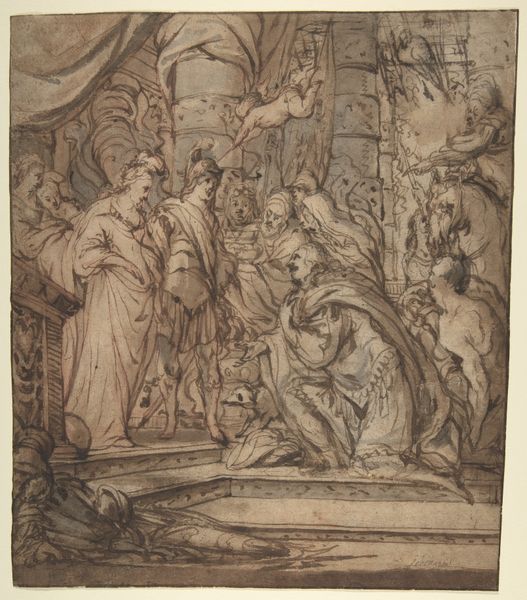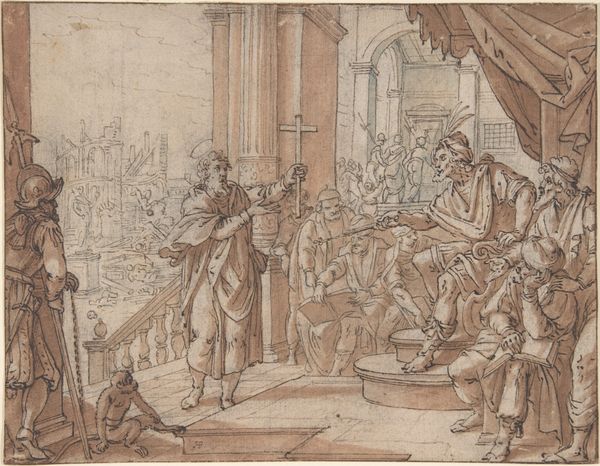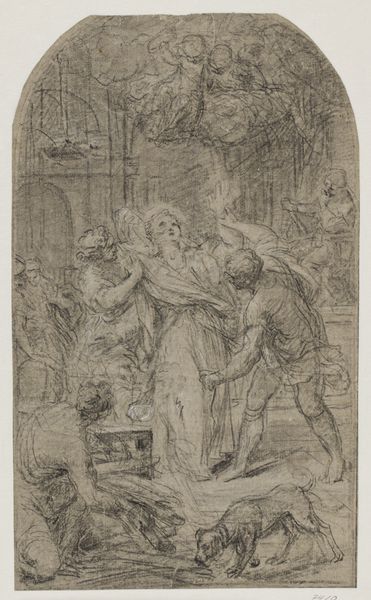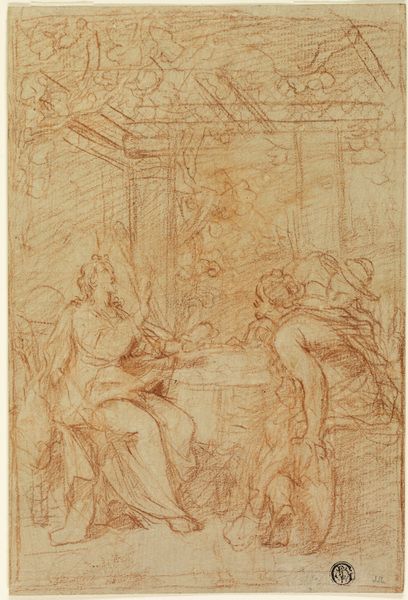
The Prodigal Son Squanders his Fortune with Prostitutes 1585 - 1639
0:00
0:00
drawing, print, ink, pencil, pen, engraving
#
drawing
#
narrative-art
#
baroque
# print
#
charcoal drawing
#
figuration
#
ink
#
pencil drawing
#
pencil
#
pen
#
genre-painting
#
history-painting
#
engraving
Dimensions: sheet: 8 1/8 x 6 15/16 in. (20.7 x 17.6 cm)
Copyright: Public Domain
Editor: This drawing, "The Prodigal Son Squanders his Fortune with Prostitutes," is attributed to Augustin Braun and was likely made sometime between 1585 and 1639. The scene feels…chaotic. So many figures crammed into one space, drinking, gambling... It definitely feels like a moral lesson is being depicted here. What sort of symbols stand out to you? Curator: Absolutely. The image is practically overflowing with symbolism. Consider the contrast between the revelry at the table – the overflowing drinks, the flirtatious interactions – and what that all signifies in relation to the narrative it invokes, which is, of course, of squandered inheritance and moral decay. This Prodigal Son is participating in a long legacy of imagery associated with wealth. Editor: So, the scene itself *is* a symbol? It isn't just a depiction of a party? Curator: Exactly. The setting is deeply symbolic. Think about the cultural memory associated with certain objects – the tankards represent excess; the cards, chance and recklessness; and even the relatively hidden alcove, visible through the architecture behind the table, which, if we look at similar iconography in other paintings, usually is reserved for moments of intimacy. And what sort of intimacy is being suggested in this scenario? What might those suggestions signify? Editor: Okay, so all those individual components create a collective meaning. But it is also meant to prompt self-reflection, or remind the viewer of social dangers? Curator: Precisely. The symbols resonate within a specific cultural framework. They prompt reflection not just on individual moral failings but on societal values and the potential for corruption. Notice the clothes – these are not rags. They carry the mark of someone born into prosperity, a prosperity easily lost, or, from a cynical perspective, squandered due to internal desires, human desire. Editor: That makes so much sense! It's not just a drawing, but a complex layering of symbols meant to speak to a specific time. I see the artwork completely differently now. Curator: Indeed! Visual symbols carry echoes of meaning. By understanding their historical context, we uncover a richer and deeper conversation with the past.
Comments
No comments
Be the first to comment and join the conversation on the ultimate creative platform.

